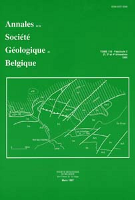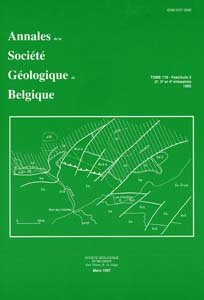- Home
- Volume 114 (1991)
- Fascicule 1 (Proceedings of the International Meet...
- Interpretation of pumping tests in the anisotropic Brabant Massif by means of a numerical inverse model
View(s): 413 (2 ULiège)
Download(s): 171 (1 ULiège)
Interpretation of pumping tests in the anisotropic Brabant Massif by means of a numerical inverse model

Abstract
By order of the Belgian Geological Survey the Laboratory of Applied Geology and Hydrogeology of the State University of Ghent has made several pumping tests in the Paleozoic basement of Flanders (Brabant Massif).
A brief study of the observed drawdowns at the first pumping site made it clear that the aquifer was anisotropic in the horizontal plane. In such an aquifer a unique solution can only be obtained if the drawdowns are measured in at least three observation wells located in three different directions with respect to the pumped well. At a few sites, this configuration not being available, two pumping tests were made in order to obtain the data as required.
The drawdowns measured during the pumping tests were interpreted by an inverse model. This model combines a numerical model with a sensitivity analysis and a non-linear regression analysis. The obtained hydraulic characteristics of the aquifer formed by the Paleozoic basement are the effective transmissivity, the anisotropy, the direction of maximum transmissivity and the elastic storage coefficient. A unique solution can be obtained for the pumping tests at the sites Kortemark, Deinze and Deerlijk. This was not the case for the pumping tests at Gijzegem where two possible solutions were found.
The results show that the direction of maximum transmissivity is the same at all pumping sites. A possible explanation for the observed anisotropy in the horizontal plane is the occurence of a system of inclined parallel joints. In this case the direction of maximum transmissivity is equal to the direction of the strike of the joints while the inclination of the joints can be deduced from the anisotropy. The direction of the inclination can not be deduced.
To cite this article
About: L. Lebbe
Senior research associate of the National Fund of Scientific Research, Laboratory of Applied Geology and Hydrogeology.
About: M. Mahauden
Scientific assistant of the Laboratory of Applied Geology and Hydrogeology.
About: W. De Breuck
Professor, Head of the Laboratory of Applied Geology and Hydrogeology, State University of Ghent, Krijgslaan 281, B-9000 Ghent, Belgium.





